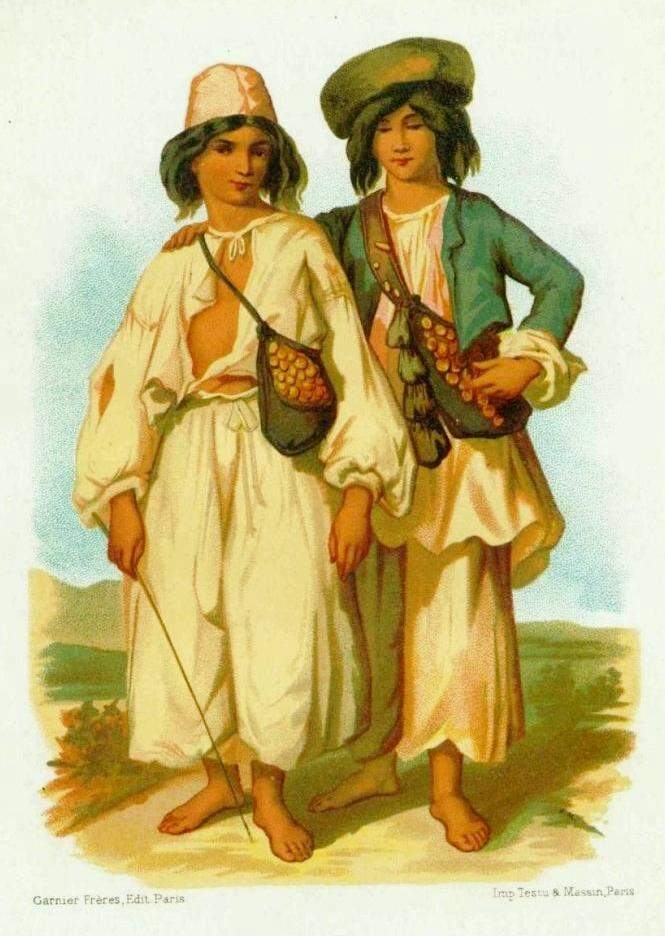
Austrian Gypsies: Austrian Empire/Austro Hugarian Empire (18th-19th Centuries)

Figure 1.--This color lithograph was captioned 'Enfants Tsiganes (Autriche)' meaning Gipsy Children, (Austria).
It was part of a portfolio of costumes around the world.It was published by Garnier in Paris and printed by Testu & Massin, Paris, about 1880.
|
|
Austria with the rise of the Hapsburgs emerged as a major European power. Because of the popular attitides toward Gypsies, Austrian authorities begiunning with Emperess Naria Theresas began enacting laws to control them (18th century). The laws and regulations enacted was to ban their migrant lfe style. The Austrians were established 'colonies' for them. Austria after defeat at the hands of the Prussians formed a dual monarchy with the Hungarians known as the Austro-Hungarian Empire. This created a huge area within the Gypsies could theoretically move with reltive freedom. The Gypsey population of Hungary was much larger than that of Austria and not as regulared as the smaller Austrian Gypsey population. The Gypsy policies of Emperess Maria Theresia and her son, Emperor Joseph II, signiicantly affected Austrian gypsy settlement patterns. Settlement was somewhat successfulonly in the west--Burgenland along the Hungarian border. The measures were enforced through repressive actions. The Gysies were at the same time granted some rights, a legal status that they did not previously enjoy. The laws did not, howver, did not have the desired effect. To an extent Gypsies were forced into settlements. This did not mean, however, that even the settled Gypsies were integrated into Austrian society.
Moving out of their wagons into small houses did not mean assimilation. And even then,many had to move a great deal to seek occassional or seasonal jobs. About half were migrant wirkers. They continued to be a foreign element which occupied the lowest ranks of the social order.
HBC

Navigate the Boys' Historical Clothing Austrian pages:
[Return tio the Main Austrian Gypsey page]
[Austrian catalogs]
[Austrian choirs]
[Austrian movies]
[Austrian school uniforms]
[Austrian youth groups]
[Lederhosen]
Navigate the Boys' Historical Clothing Web Site:
[Introduction]
[Activities]
[Biographies]
[Chronology]
[Clothing styles]
[Countries]
[Bibliographies]
[Contributions]
[Essays]
[FAQs]
[German glossary]
[Images]
[Links]
[Registration]
[Tools]
[Boys' Clothing Home]
Navigate the Boys' Historical Clothing national pages:
[Return to the Main Austrian folk page]
[Return to the Main ethnic country page]
[Australia]
[Austria]
[Belgium]
[England]
[France]
[Germany]
[Ireland]
[Italy]
[Japan]
[Korea]
[Mexico]
[New Zealand]
[Scotland]
[United States]
Created: March 18, 2003
Last updated: 12:32 AM 6/23/2012



